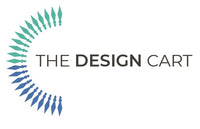Difference between machine embroidery and hand embroidery
You must have many embroidered fabrics in your closet? Isn’t it? But do you know whether they are hand embroidered or machine embroidered? Have you asked the embroidery fabric retailers about it ever while buying or exploring the collection? You might imagine that the only difference between embroidery done by hand and that created by machine was the method used. There is also the notion that items embroidered by hand have a greater value and are more sentimental than those embroidered by machine. But when you get down to the details, there are numerous other differences as well. Here we will explain the differences between hand vs. machine embroidery.
The main difference between Hand and Machine Embroidery is the stitching process. Hand Embroidery allows for a variety of stitches, thread and fabrics. Every work is unique to the sewer who performed the embroidery. Machine embroidery is very uniform and each piece, if multiple items are stitched, is all identical.

Machine Embroidery is computer generated. Pre-made patterns are imputed into a computer program that controls the stitching on the embroidery machine. All designs are uniform in their stitches and each project looks exactly the same. There is no variance for the stitchery’s passion of the art form. The design will be stitched just as the computer pattern dictates. Machine Embroidery cannot have threads divided as the Hand Embroidery needle artist can do with the hand projects. Threads are typically made of rayon, polyester or metallic threads are used and give an artificial look. Very seldom can the design be given a more dimensional look and this is due to the type of stitching that has to occur with Machine Embroidery. And finally, Machine Embroidery for the most part has very little “collective value” due to the fact that it is mass produced.

Hand embroidery begins by stretching the fabric on a hoop of either wood or plastic. The hoop size depends on what the sewer is comfortable with. The size of the hand embroidery needle and the thread choice are dependent on the type of Hand Embroidery chosen for the project. Along with needle and thread choice, the needle artist adds their own personal touch to their embroidery making the project “come alive”. Like anything that is a craft, it takes time and practice to perfect stitches, but if it is something one chooses to master, it brings great satisfaction to both the sewer and recipient. Each piece of Hand Embroidery is unique. Even if it is duplicated with the same pattern, it is the needle artist’s discretion that makes each piece a one of a kind work of art. Part of Hand Embroidery’s uniqueness is due to the types of threads used. The most often used threads are cotton or silk. These threads have wonderful smoothness and sheen to them, lending to the beautiful shading that is possible with certain Hand Embroidery stitches. More detail can be achieved because of the various thicknesses of the threads. And lastly, Hand Embroidery is a keepsake. It has “collective value” because it is time consuming and requires workmanship and artistry.
We have included a couple pictures in this post. One is an example of Hand Embroidery using the long and short stitch primarily on the roses as well as on the leaves. The shading of the thread in color and thickness gives a life like quality to the piece. There is dimension to the piece.

The other picture is also a rose, but stitched with a machine. There is sheen to the rose due to the rayon thread used, but it is not very dimensional. There is some gradation of the light green tones, but this is probably due to a variegated thread used for that part of the design
.
Each piece has its place and demand.
So Which Is Best?
Hand embroidery and machine embroidery are two very distinct methods of stitching and each has its purpose. It just depends on your end-goal.
A hand embroidered work is more artistic and personal, making it the ideal way to create a special heirloom or a source of pride for the embroiderer. The process requires an investment of time and heart to include the details that will make the embroidery stand out. Depending on the skills of the person with the needle, hand embroidery can result in a lifelike piece of art that will make a unique display to be enjoyed by all.
Machine embroidery, on the other hand, produces more professional looking work in a fraction of the time it takes to do something similar by hand. The broad selection of designs available today provides everything that is needed for personal use and for small businesses as well.
The same is true for sewers who want the versatility that an embroidery machine brings to their craft. They may want to add decorative detailing to home items like place mats or curtains, or add cute animals or cartoon characters to their children’s clothes. Even the smallest embroidery detail adds interest and value to all types of everyday items.
If embroidery is a new area of interest for you, your lack of experience doesn’t mean that you are limited in your choices. Every person who has become an artist with a needle and thread had to start with their first piece.
If you prefer machine embroidery, no previous embroidery experience is required. Today’s embroidery machines are virtually decision-free! Once you decide what you want to embroider and in what colors, the machine will do the rest.
We at www.designcart.com offer you a wide and varied selection of embroidered fabrics, embroidered borders and so much more. Visit us at www.designcart.com for all your immediate fabric needs. Happy Shopping!






